Abstract
The maize sucrose synthetase isozyme (SS2) present in sh1 endosperm, sh1 seedlings, and in suspension culture cells was purified to homogeneity from each of these tissues by sequential ammonium sulfate fractionation, diethylaminoethyl-cellulose chromatography, gel filtration chromatography, and affinity elution with UTP from a carboxymethyl-cellulose column. Cyanogen bromide digests were used to demonstrate that the SS2 isozymes in these different tissues are structurally identical and are therefore the product of the same gene. The sucrose synthetase produced by the Sh1 gene (SS1) was purified by modification of the SS2 procedure and was used in comparative analyses of the two isozymes. Ouchterlony assays demonstrated that SS1 and SS2 have partial antigenic identity. The two isozymes have similar enzyme kinetics in the sucrose cleavage reaction but differ in their relative activities with ADP and TDP. The amino acid compositions of SS1 and SS2 are similar, and proteolytic digests revealed that they share limited structural homologies.
Full text
PDF
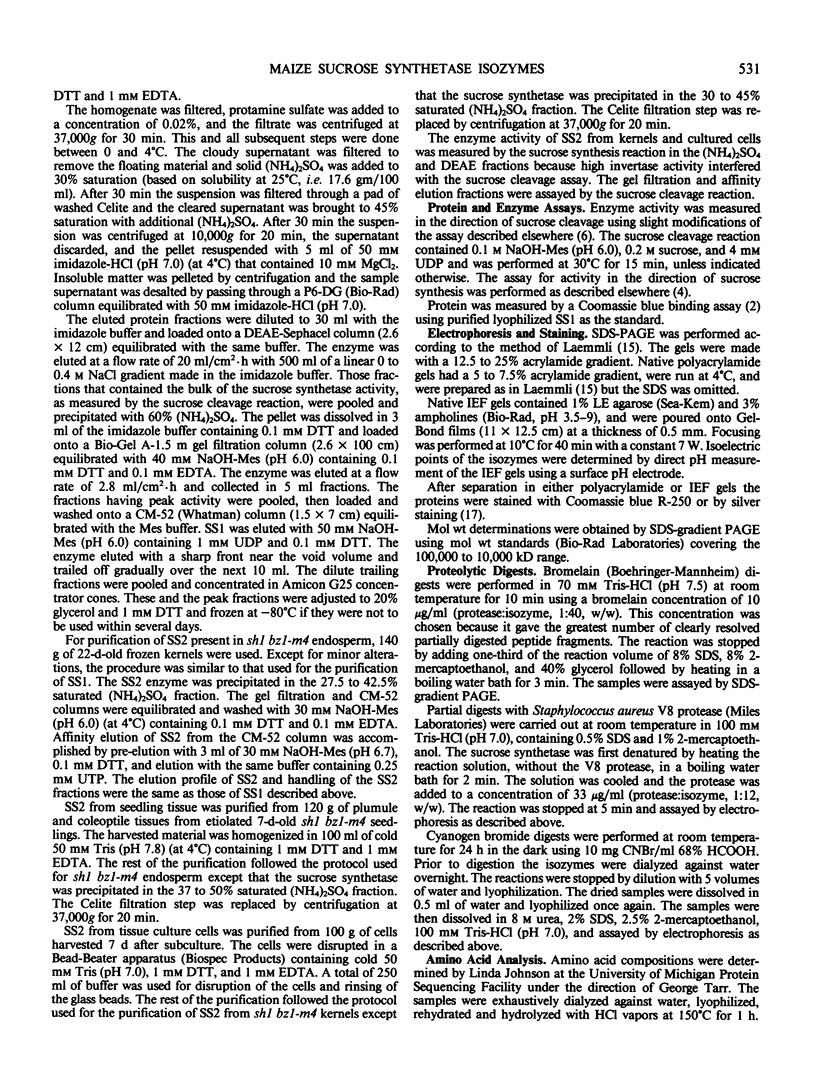
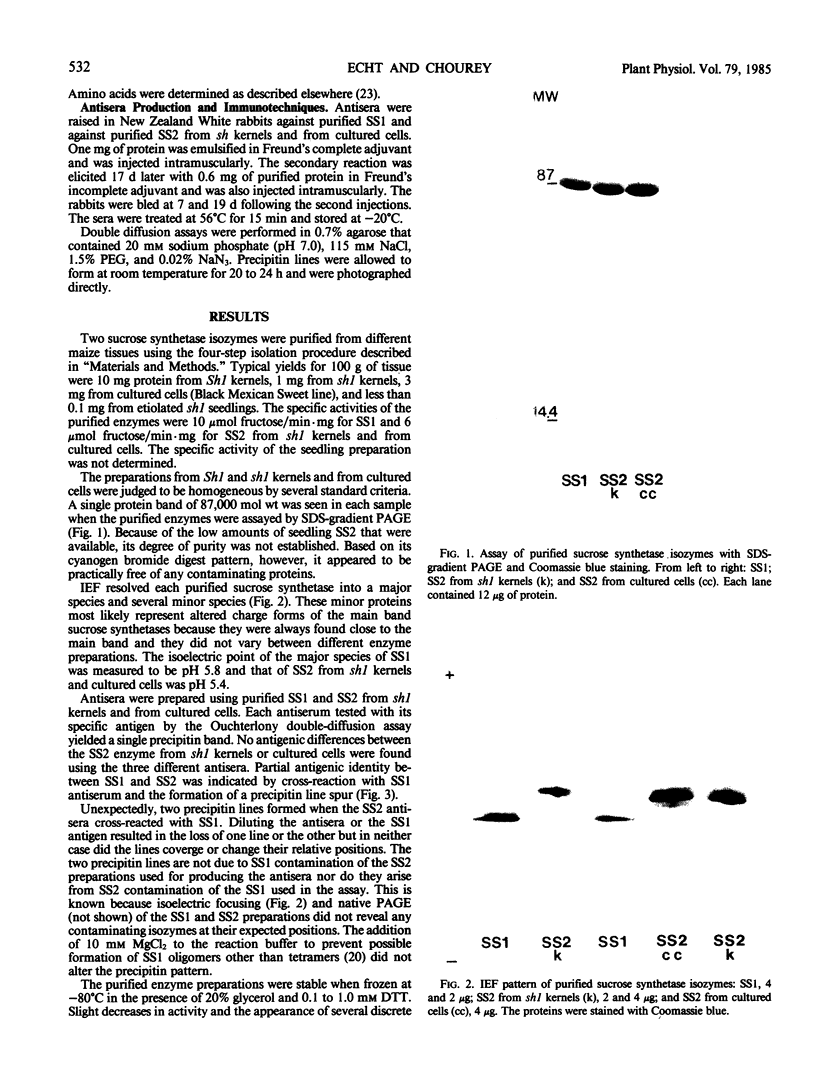
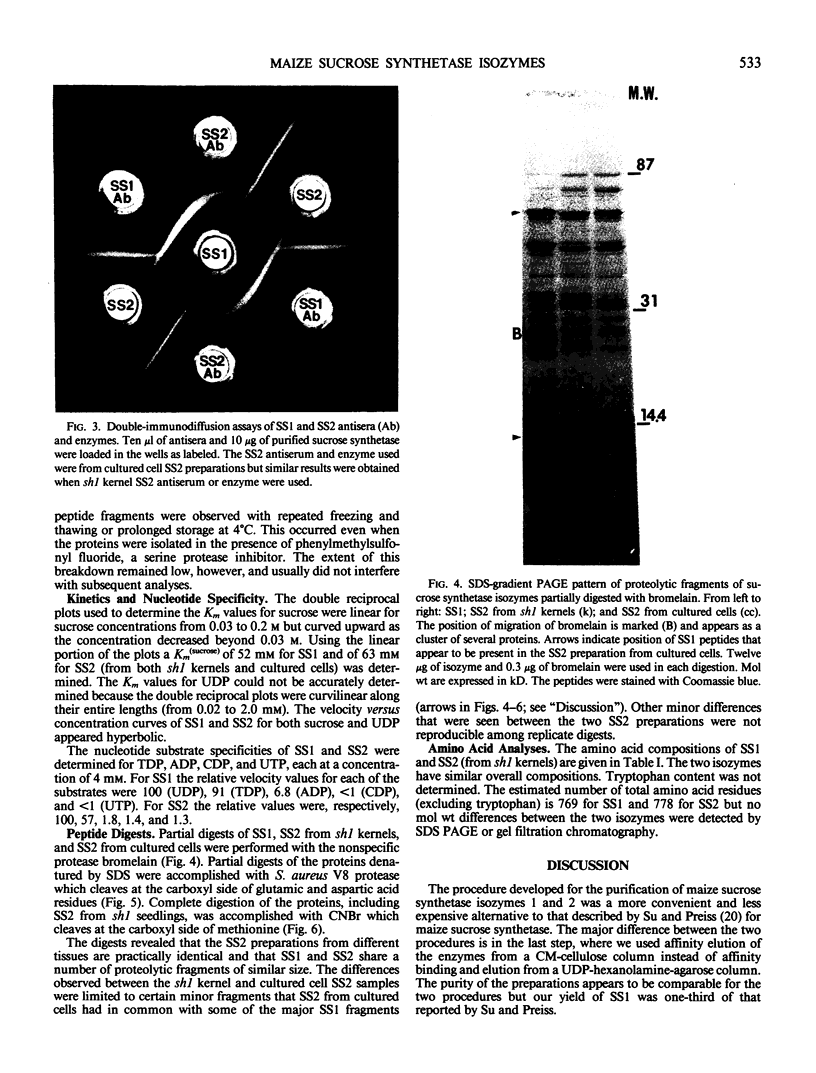
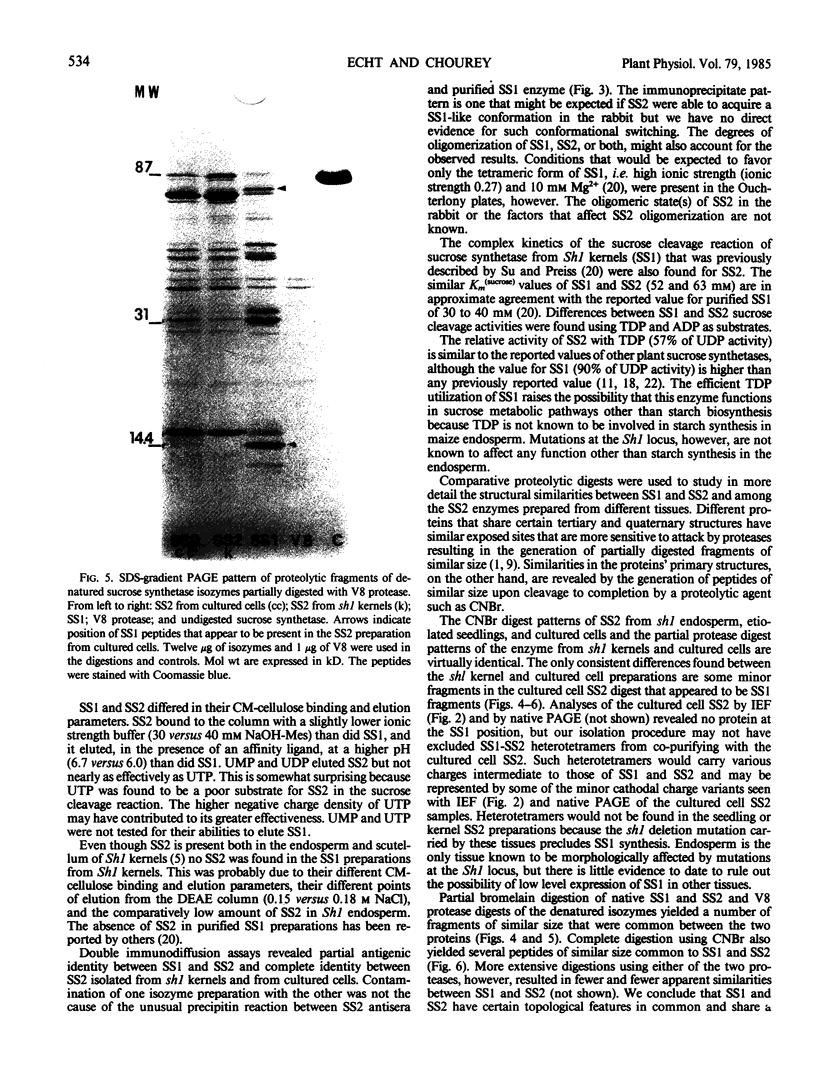
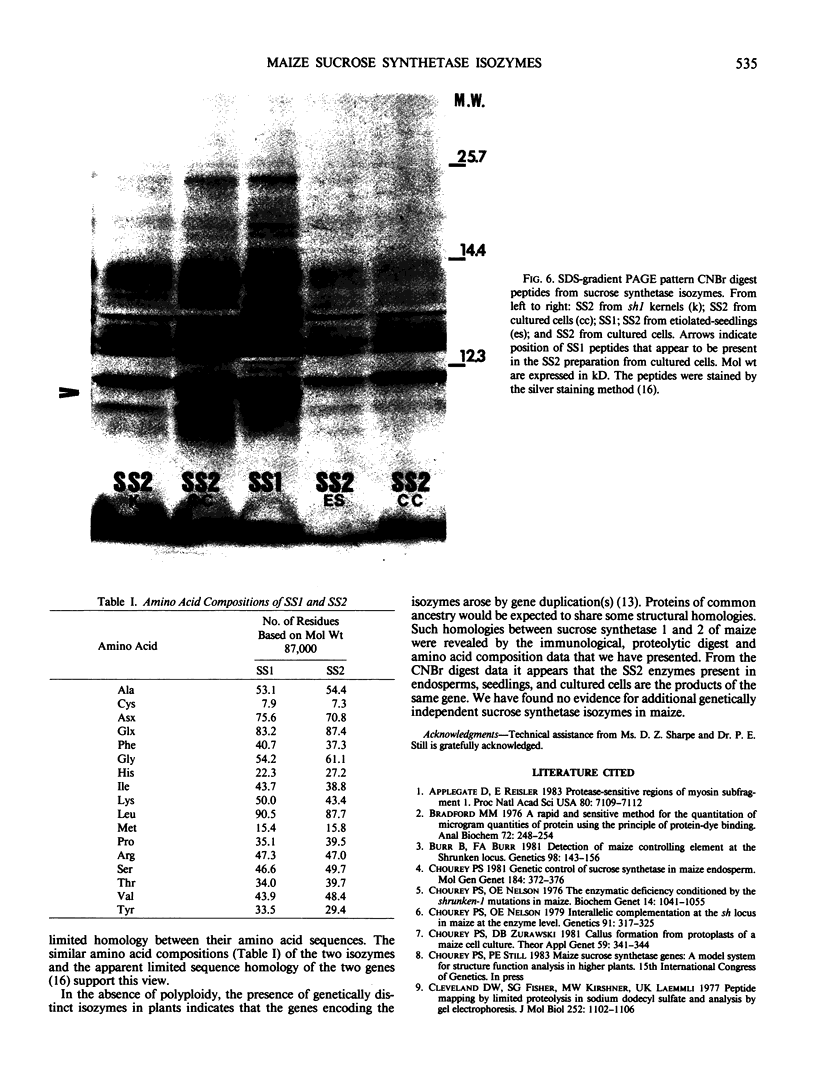

Images in this article
Selected References
These references are in PubMed. This may not be the complete list of references from this article.
- Applegate D., Reisler E. Protease-sensitive regions in myosin subfragment 1. Proc Natl Acad Sci U S A. 1983 Dec;80(23):7109–7112. doi: 10.1073/pnas.80.23.7109. [DOI] [PMC free article] [PubMed] [Google Scholar]
- Bradford M. M. A rapid and sensitive method for the quantitation of microgram quantities of protein utilizing the principle of protein-dye binding. Anal Biochem. 1976 May 7;72:248–254. doi: 10.1006/abio.1976.9999. [DOI] [PubMed] [Google Scholar]
- Burr B., Burr F. A. Controlling-element events at the shrunken locus in maize. Genetics. 1981 May;98(1):143–156. doi: 10.1093/genetics/98.1.143. [DOI] [PMC free article] [PubMed] [Google Scholar]
- Chourey P. S., Nelson O. E. Interallelic Complementation at the sh Locus in Maize at the Enzyme Level. Genetics. 1979 Feb;91(2):317–325. doi: 10.1093/genetics/91.2.317. [DOI] [PMC free article] [PubMed] [Google Scholar]
- Chourey P. S., Nelson O. E. The enzymatic deficiency conditioned by the shrunken-1 mutations in maize. Biochem Genet. 1976 Dec;14(11-12):1041–1055. doi: 10.1007/BF00485135. [DOI] [PubMed] [Google Scholar]
- Cleveland D. W., Fischer S. G., Kirschner M. W., Laemmli U. K. Peptide mapping by limited proteolysis in sodium dodecyl sulfate and analysis by gel electrophoresis. J Biol Chem. 1977 Feb 10;252(3):1102–1106. [PubMed] [Google Scholar]
- Delmer D. P., Albersheim P. The Biosynthesis of Sucrose and Nucleoside Diphosphate Glucoses in Phaseolus aureus. Plant Physiol. 1970 Jun;45(6):782–786. doi: 10.1104/pp.45.6.782. [DOI] [PMC free article] [PubMed] [Google Scholar]
- Delmer D. P. The purification and properties of sucrose synthetase from etiolated Phaseolus aureus seedlings. J Biol Chem. 1972 Jun 25;247(12):3822–3828. [PubMed] [Google Scholar]
- Dooner H. K. Regulation of the enzyme UFGT by the controlling element Ds in bz-m4, an unstable mutant in maize. Cold Spring Harb Symp Quant Biol. 1981;45(Pt 2):457–462. doi: 10.1101/sqb.1981.045.01.060. [DOI] [PubMed] [Google Scholar]
- Gottlieb L. D. Conservation and duplication of isozymes in plants. Science. 1982 Apr 23;216(4544):373–380. doi: 10.1126/science.216.4544.373. [DOI] [PubMed] [Google Scholar]
- Milner Y., Avigad G. Thymidine diphosphate nucleotides as substrates in the sucrose synthetase reaction. Nature. 1965 May 22;206(4986):825–825. doi: 10.1038/206825a0. [DOI] [PubMed] [Google Scholar]
- Wilson J. M., Tarr G. E., Mahoney W. C., Kelley W. N. Human hypoxanthine-guanine phosphoribosyltransferase. Complete amino acid sequence of the erythrocyte enzyme. J Biol Chem. 1982 Sep 25;257(18):10978–10985. [PubMed] [Google Scholar]








